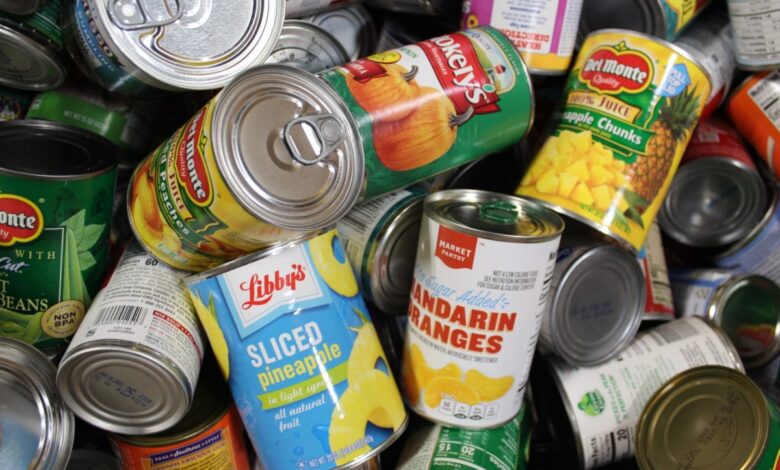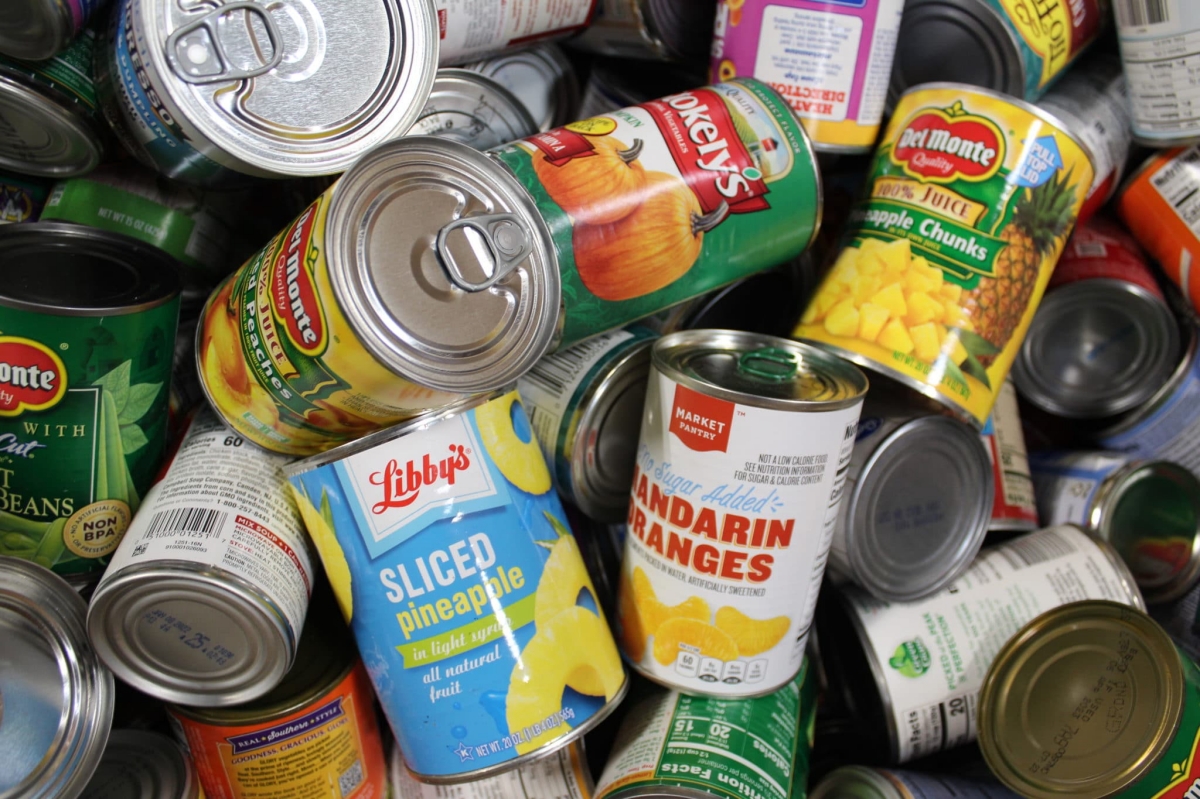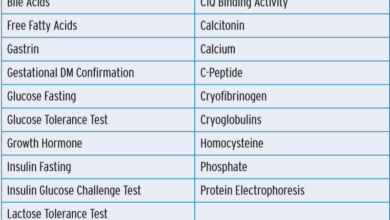
Why refrigerators are an important necessity for people with diabetes? Proper food storage is vital for managing blood sugar levels. A well-maintained refrigerator plays a key role in preserving diabetic-friendly foods, ensuring optimal nutrient retention, and preventing spoilage. This post delves into the science behind food safety, explores the ideal refrigerator organization for diabetes management, and highlights the importance of regular maintenance for a healthy diet.
Maintaining a stable blood sugar level is paramount for people with diabetes. This involves careful selection, preparation, and storage of food. The right refrigerator setup, along with proper organization and maintenance, can significantly impact blood sugar control. This comprehensive guide will illuminate the critical role of refrigerators in supporting a healthy diabetes management plan.
Importance of Food Storage for Diabetes Management
Proper food storage is a crucial, often overlooked, aspect of diabetes management. Maintaining the quality and safety of food, particularly those tailored for diabetic diets, directly impacts blood sugar control. This is because the way food is stored affects its nutritional content, its potential for spoilage, and the risk of contamination, all of which play a role in blood glucose levels.
Understanding these factors empowers individuals with diabetes to make informed decisions about food storage, ultimately contributing to better overall health.Food storage significantly influences blood sugar control. The way food is stored impacts its nutritional composition and potential for spoilage. Fresh produce, for example, loses nutrients and becomes less palatable when stored improperly. These changes can affect the body’s ability to process nutrients, which in turn can impact blood sugar levels.
Furthermore, the risk of foodborne illnesses increases with improper storage, causing potential discomfort and complications for individuals with diabetes, who may have compromised immune systems.
Impact of Temperature Control on Nutrient Preservation
Temperature control is paramount in preserving the nutritional value of diabetic-friendly foods. Maintaining the correct temperature range prevents the growth of harmful bacteria and slows down the degradation of essential vitamins and minerals. Refrigeration is often crucial for extending the shelf life of perishable foods and preserving their nutritional integrity. The appropriate temperature for storage varies depending on the food type.
Storage Needs of Different Food Types
Different types of diabetic-friendly foods have varying storage needs. Understanding these needs is key to maintaining their quality and preventing spoilage.
- Fresh Produce: Fruits and vegetables should be stored at appropriate temperatures to prevent premature ripening or spoilage. For instance, leafy greens need a cool, humid environment, while berries might need to be stored in a sealed container in the refrigerator to maintain freshness. Proper storage methods, like using breathable produce bags or storing produce separately from ethylene-producing fruits, help extend their shelf life and maintain their nutritional value.
- Proteins: Meats, poultry, and fish require careful storage to prevent bacterial growth. They should be kept refrigerated at or below 40°F (4°C) and separated from other foods to avoid cross-contamination. Properly storing proteins ensures their safety and prevents potential health risks associated with bacterial contamination. Examples include storing raw meats on the bottom shelf of the refrigerator to avoid potential contamination of other foods.
Keeping perishable diabetic-friendly foods fresh is crucial. A reliable refrigerator is essential for managing blood sugar levels and avoiding potential health complications. For more in-depth insights on health and wellness, particularly regarding early-onset Alzheimer’s, I highly recommend checking out this great resource: best health blog early onset alzheimers. Ultimately, a well-stocked fridge filled with healthy options is key for maintaining good diabetic management.
- Carbohydrates: Starches like rice, pasta, and grains generally maintain their quality at room temperature when stored in airtight containers. However, prolonged exposure to high temperatures can lead to spoilage. Therefore, these foods should be stored in a cool, dry place to prevent moisture damage. Examples include using airtight containers to prevent moisture absorption or insect infestation.
Preventing Cross-Contamination
Cross-contamination is a significant concern for individuals with diabetes, as it can lead to bacterial growth and potential health complications. To minimize this risk, separate diabetic-friendly foods from non-diabetic foods during storage.
- Separate Storage Areas: Using separate containers and storage areas for diabetic-friendly foods and other foods helps to prevent the transfer of bacteria and contaminants. This is particularly important for raw and cooked foods.
- Separate Cutting Boards: Using separate cutting boards for diabetic-friendly foods and other foods is crucial to prevent cross-contamination. This is especially important for raw meats, poultry, and seafood, as these foods can harbor harmful bacteria. Using color-coded cutting boards can enhance this practice.
- Thorough Handwashing: Thorough handwashing before and after handling diabetic-friendly foods is essential to minimize the risk of cross-contamination. This practice helps to prevent the spread of bacteria from one food to another.
Refrigerator’s Role in Preserving Food Safety

A well-maintained refrigerator is crucial for diabetics to safely store and enjoy their food while managing their condition. Proper food storage significantly impacts blood sugar control and overall health. Avoiding foodborne illnesses and preserving nutrients are key benefits of a properly functioning refrigerator.The science behind food spoilage involves the growth of microorganisms, primarily bacteria, yeasts, and molds. These microorganisms thrive in warm, moist environments, rapidly multiplying and producing toxins that can cause food poisoning.
Lower temperatures, like those found in a refrigerator, slow down or halt this microbial growth, thus preventing spoilage and associated risks.
Ideal Temperature Range for Food Safety, Why refrigerators are an important necessity for people with diabetes
Maintaining a consistent temperature within the refrigerator is paramount for food safety. The ideal temperature range for safe food storage is between 37°F (3°C) and 40°F (4°C). This range effectively inhibits the growth of harmful bacteria. Lowering the temperature below this range, while preventing bacterial growth, may also affect the taste and texture of certain foods.
Proper Food Arrangement and Rotation
Proper organization and rotation within the refrigerator are essential to maximize freshness and minimize waste. Arranging food items in a way that allows for air circulation prevents food from becoming overly moist, which can lead to spoilage. Using the FIFO (First-In, First-Out) method is crucial. This means placing newer items behind older ones to ensure that older items are consumed before they spoil.
This simple practice significantly reduces food waste and promotes food safety.
Common Refrigerator-Related Food Safety Hazards
Diabetics must be particularly vigilant about potential hazards associated with improper refrigerator use. One common hazard is cross-contamination. Raw meats and poultry should always be stored separately from other foods to prevent the spread of bacteria. Improperly sealed containers can also lead to contamination, so ensuring all containers are sealed tightly is critical. Another hazard is thawing food at room temperature.
This process allows bacteria to grow rapidly, increasing the risk of foodborne illness.
Importance of Appropriate Food Containers and Wraps
Appropriate food containers and wraps play a vital role in maintaining food safety. Airtight containers prevent leaks and moisture buildup, reducing the risk of bacterial growth. Food-safe wraps and containers are also important for preventing cross-contamination between different food items. Properly storing foods in these containers helps preserve nutrients, maintaining the quality of the food.
Refrigerator Organization for Diabetic Diets
Maintaining a healthy diabetic diet hinges on careful food storage. A well-organized refrigerator is crucial for preventing food spoilage, ensuring food safety, and simplifying the process of selecting healthy meals. This is especially true for people with diabetes, who need to be mindful of portion sizes and food combinations to manage their blood sugar levels effectively.
Optimizing Refrigerator Layout for Diabetic Food Storage
A well-organized refrigerator makes meal planning easier and promotes better food choices. Design your refrigerator layout to keep diabetic-friendly foods easily accessible while minimizing the risk of cross-contamination. This is achievable through strategic placement and appropriate containers.
Minimizing Cross-Contamination Risks
Preventing cross-contamination is paramount in maintaining food safety. Raw meats, poultry, and seafood should be stored separately from other foods to prevent the spread of bacteria. Use separate containers for raw and cooked foods, and ensure proper handwashing techniques after handling raw ingredients.
Recommended Containers and Storage Methods
Choosing the right containers and storage methods is crucial for preserving the quality and safety of diabetic-friendly foods. This includes keeping track of expiration dates, storing similar foods together, and maintaining a clean refrigerator. Here are some recommended storage methods for different food types.
| Food Type | Best Storage Method | Reasons | Image Description |
|---|---|---|---|
| Fruits | Separate containers | Prevent bruising and maintain freshness. Proper storage helps maintain the nutritional value of fruits. | Fresh fruits, such as berries and apples, are neatly arranged in individual airtight containers within a crisper drawer. The containers prevent cross-contamination and maintain the freshness of the fruits. |
| Vegetables | Produce drawer | Preserve moisture and prevent wilting. The produce drawer is designed to regulate humidity, keeping vegetables crisp and preventing premature spoilage. | A crisper drawer is filled with various vegetables like leafy greens, carrots, and bell peppers. The vegetables are arranged in a way that allows air circulation and prevents them from touching each other. |
| Dairy Products (Milk, Yogurt, Cheese) | Designated shelf or drawer | Maintain freshness and prevent contamination. Dairy products should be stored on a dedicated shelf or drawer to prevent cross-contamination from other foods. | A dedicated shelf in the refrigerator holds cartons of milk, containers of yogurt, and various types of cheese. The dairy products are stored in a cool and dry environment. |
| Proteins (Meat, Poultry, Fish) | Separate containers in the bottom drawer or shelf | Prevent leakage and cross-contamination. Raw proteins should be stored in airtight containers and on the bottom shelf or in a separate drawer to prevent leakage and contamination of other foods. | The bottom drawer of the refrigerator is filled with containers of raw chicken, beef, and fish. Each protein is stored in a separate container to prevent leakage and cross-contamination. |
| Grains (Rice, Pasta, etc.) | Airtight containers | Prevent moisture absorption and spoilage. Grains and dry goods should be stored in airtight containers to prevent moisture absorption and spoilage. | Airtight containers are used to store various types of grains, including rice, pasta, and beans. The containers are clearly labeled with the contents and date. |
Organizing for Easy Access and Visibility
Organizing the refrigerator for easy access to diabetic-friendly foods will promote healthy eating habits. Group similar items together and label containers clearly. This strategy simplifies meal preparation and encourages the consumption of healthier options. Use clear containers to easily identify contents and their expiration dates.
Keeping a well-stocked fridge is crucial for managing diabetes, ensuring consistent access to fresh produce and controlled portions. Maintaining a healthy diet is vital for overall well-being, especially for older adults, and a recent article on quality of diet for older adults has declined heres how to fix it highlights some practical solutions. This is even more critical for people with diabetes, who need consistent access to regulated foods to manage their blood sugar levels effectively.
A properly stocked refrigerator helps with this, making it a true necessity.
Refrigerator Management and Diabetic Care

A well-maintained refrigerator is crucial for effective diabetes management. It allows for proper storage of perishable foods, essential for controlling blood sugar levels and maintaining a balanced diet. Keeping your fridge clean and organized, and knowing how to properly store foods, ensures optimal food safety and reduces the risk of bacterial growth, thus supporting overall health.Maintaining a clean and organized refrigerator is a vital aspect of managing a diabetic diet effectively.
A clean refrigerator environment minimizes the risk of contamination and spoilage, which is crucial for controlling blood sugar levels.
Refrigerator Cleaning and Maintenance
Regular cleaning and maintenance of the refrigerator are vital for preventing bacterial growth and food contamination. A clean refrigerator environment reduces the risk of harmful bacteria proliferating, protecting you from foodborne illnesses. This is especially important for individuals with diabetes, who may have a weakened immune system.
- Regular Cleaning Schedule: A thorough cleaning of the refrigerator, including shelves, drawers, and the back, should be performed at least once a week. This prevents the buildup of food particles, spills, and potential bacterial breeding grounds. Cleaning once a week prevents the growth of mold and bacteria, minimizing the risk of food contamination.
- Proper Cleaning Techniques: Use a mild, non-abrasive cleaner and warm water to clean all surfaces. Avoid harsh chemicals, as they can damage the refrigerator’s components and potentially contaminate the food. Thorough cleaning removes grime and food particles, preventing bacteria from growing and creating a safe environment for food storage. Be sure to dry all surfaces completely after cleaning.
- Regular Deodorizer Use: Using a refrigerator deodorizer can help maintain a fresh, clean environment. These can neutralize odors that might attract pests or cause spoilage. Deodorizers are a useful tool in preventing unpleasant odors from developing, which can lead to contamination if left unchecked.
Checking Expiration Dates and Discarding Spoiled Foods
Regularly checking expiration dates and discarding spoiled foods is crucial for maintaining optimal food safety. This is a crucial part of a diabetes-friendly diet, as consuming spoiled food can cause illness, impacting blood sugar control.
- Frequency of Checks: It’s recommended to inspect all food items for expiration dates at least once a day. This proactive approach helps identify and discard potentially contaminated food before it poses a risk. Daily checks ensure that food is consumed within its safe timeframe, avoiding the risk of consuming expired or spoiled items.
- Identification of Spoilage: Pay close attention to visual cues like discoloration, unusual odors, or signs of mold. Spoiled food should be immediately discarded to prevent bacterial contamination and potential illness. Recognizing spoilage is key to maintaining a healthy diet, as consuming spoiled food can lead to digestive issues and affect blood sugar levels.
- Proper Disposal: Dispose of spoiled food in a sealed container to prevent the spread of bacteria. Proper disposal prevents the risk of contaminating other foods and helps maintain a clean environment. Use a dedicated bin for discarding spoiled food to avoid cross-contamination.
Labeling Foods for Identification
Labeling foods for quick identification and to prevent cross-contamination is important for effective refrigerator management. This helps in organizing food items and prevents misplacement or consumption of items that might be unsafe.
- Clear Labeling: Use labels to clearly identify the contents of containers. Include the date of purchase and any special instructions, like refrigeration requirements. Clear labels are key to knowing what’s in the refrigerator, helping to avoid confusion and ensure that food is consumed within safe timeframes.
- Preventing Cross-Contamination: Use separate containers or trays for raw and cooked foods to prevent cross-contamination. This is crucial to avoid the transmission of harmful bacteria. Proper separation prevents contamination, which can be critical for maintaining a healthy diet.
- Labeling with Expiration Dates: Include the expiration date on the label to ensure easy identification and proper rotation. This aids in keeping track of the food items’ freshness and ensures that the oldest food items are used first. Using labels with expiration dates helps in maintaining proper rotation and avoiding the consumption of expired food.
Checking Refrigerator Temperature
Checking the temperature of the refrigerator regularly is crucial to ensure it is working properly. An improperly functioning refrigerator can lead to food spoilage and potentially harmful bacterial growth.
Keeping track of blood sugar levels is crucial for managing diabetes, and a reliable refrigerator is essential for storing medications and perishable diabetes-friendly foods. Just like how some teens are finding remote schooling less stressful, some teens experiencing lower levels of anxiety with remote schooling might find better organization in their daily lives, a well-stocked refrigerator offers a similar sense of control over diabetes management, making sure you always have the right food on hand.
A properly stocked fridge is a crucial part of managing diabetes well.
- Regular Temperature Checks: Use a refrigerator thermometer to monitor the temperature regularly. The ideal temperature for a refrigerator is between 37°F and 40°F (3°C and 4°C). Regular checks are essential to ensuring optimal storage conditions, minimizing the risk of spoilage.
- Troubleshooting Issues: If the temperature is too high, investigate the possible causes, such as a malfunctioning thermostat or inadequate insulation. Addressing the cause of a high temperature prevents food spoilage and potential health risks. Troubleshooting the problem is key to ensuring a safe and effective food storage environment.
- Maintaining Optimal Temperature: Maintaining the optimal temperature is vital for food safety. This helps to prevent the growth of harmful bacteria and maintains the quality of stored food items. Maintaining optimal temperature prevents spoilage, preserving the nutrients and safety of stored foods.
Alternatives and Considerations
Choosing the right refrigerator is crucial for effective diabetes management, but it’s not always a simple “one size fits all” solution. Different types of refrigerators offer varying storage capabilities, and alternative methods can play a vital role, particularly for those with limited space or specific dietary needs. This section explores the diverse options available, from traditional models to innovative solutions.Understanding the various factors influencing refrigerator selection allows for informed decisions that optimize food safety and diabetic-friendly meal planning.
Factors such as budget, available space, and the specific types of diabetic-friendly foods stored are critical considerations.
Refrigerator Types and Suitability
Different refrigerator types cater to diverse storage needs. Understanding their features helps determine the best fit for diabetic diets.
- Top-Freezer Refrigerators: These models are often budget-friendly and provide ample storage space. However, the top-freezer compartment’s temperature may fluctuate more significantly than bottom-freezer models, potentially affecting the freshness of certain foods, particularly those requiring precise temperature control. The top-freezer is generally less efficient in preserving delicate foods.
- Bottom-Freezer Refrigerators: These refrigerators often maintain a more stable temperature throughout the unit, preserving food quality better than top-freezers. They are usually more efficient in maintaining the desired temperature, making them suitable for storing a wide range of diabetic-friendly foods.
- Side-by-Side Refrigerators: These offer a spacious layout, separating the freezer and refrigerator sections, which can be convenient for organizing various food items. The larger capacity can be beneficial for households with multiple individuals or larger food quantities.
- French Door Refrigerators: These feature separate doors for the refrigerator and freezer compartments, offering more flexibility in organization. The large door space and adjustable shelving allow for personalized organization, accommodating specific storage needs of diabetic diets. The independent temperature control of the refrigerator and freezer sections can improve food preservation.
Alternative Storage Solutions
Beyond refrigerators, other storage solutions can complement or even replace a refrigerator for certain items.
- Freezers: Freezers are essential for long-term storage of frozen fruits, vegetables, and prepared meals, which can be part of a diabetic diet. Properly utilizing a freezer can reduce food waste and ensure the availability of healthy options.
- Coolers: Portable coolers, insulated containers, and even high-quality reusable shopping bags can provide temporary storage for perishable items when needed. For instance, if you need to transport a meal to work or a picnic, these alternatives can maintain the proper temperature for perishable foods.
- Pantry Storage: Dry goods, such as grains, nuts, and non-perishable foods, should be stored in a cool, dry, and dark pantry. This ensures that these items retain their nutritional value and stay safe for consumption.
Pros and Cons of Refrigerator Use for Diabetic Foods
The suitability of refrigerators for different diabetic-friendly foods varies.
| Food Type | Pros | Cons |
|---|---|---|
| Fresh Fruits and Vegetables | Maintains freshness, prevents spoilage | Requires frequent monitoring, can wilt if not stored properly |
| Dairy Products | Preserves freshness, extends shelf life | Potential for spoilage if temperature fluctuates significantly |
| Meat and Poultry | Ensures safety, prevents bacterial growth | Requires careful handling and proper storage to avoid contamination |
| Prepared Meals | Maintains freshness, convenient storage | Requires careful attention to expiration dates, proper temperature control |
Cost and Effectiveness Comparison
The cost and effectiveness of different refrigerator types and storage solutions vary considerably.
- Cost: Top-freezer refrigerators are generally the most affordable, while French door models are typically the most expensive. Alternative storage solutions, such as freezers and coolers, vary in cost depending on the size and features.
- Effectiveness: The effectiveness of a storage solution depends on its ability to maintain the appropriate temperature and humidity levels for the specific foods. Proper organization and labeling are crucial for both refrigerators and alternative storage methods.
Selecting a Refrigerator for Diabetic Needs
Choosing the right refrigerator involves careful consideration of your dietary requirements.
- Space Requirements: Evaluate the available space and plan accordingly. Consider the quantity of food items you typically store.
- Dietary Needs: Prioritize refrigerators that maintain a consistent temperature for storing various diabetic-friendly foods.
- Budget: Set a budget and compare the costs of different refrigerators and alternative storage solutions.
Summary: Why Refrigerators Are An Important Necessity For People With Diabetes
In conclusion, a well-organized and maintained refrigerator is indispensable for individuals managing diabetes. Proper food storage and temperature control are essential for preserving nutrient content, preventing spoilage, and minimizing the risk of cross-contamination. Understanding the science behind food spoilage and implementing smart storage strategies are key components of a healthy diabetes management plan. By following the tips in this guide, you can effectively leverage your refrigerator to optimize your dietary choices and overall health.





